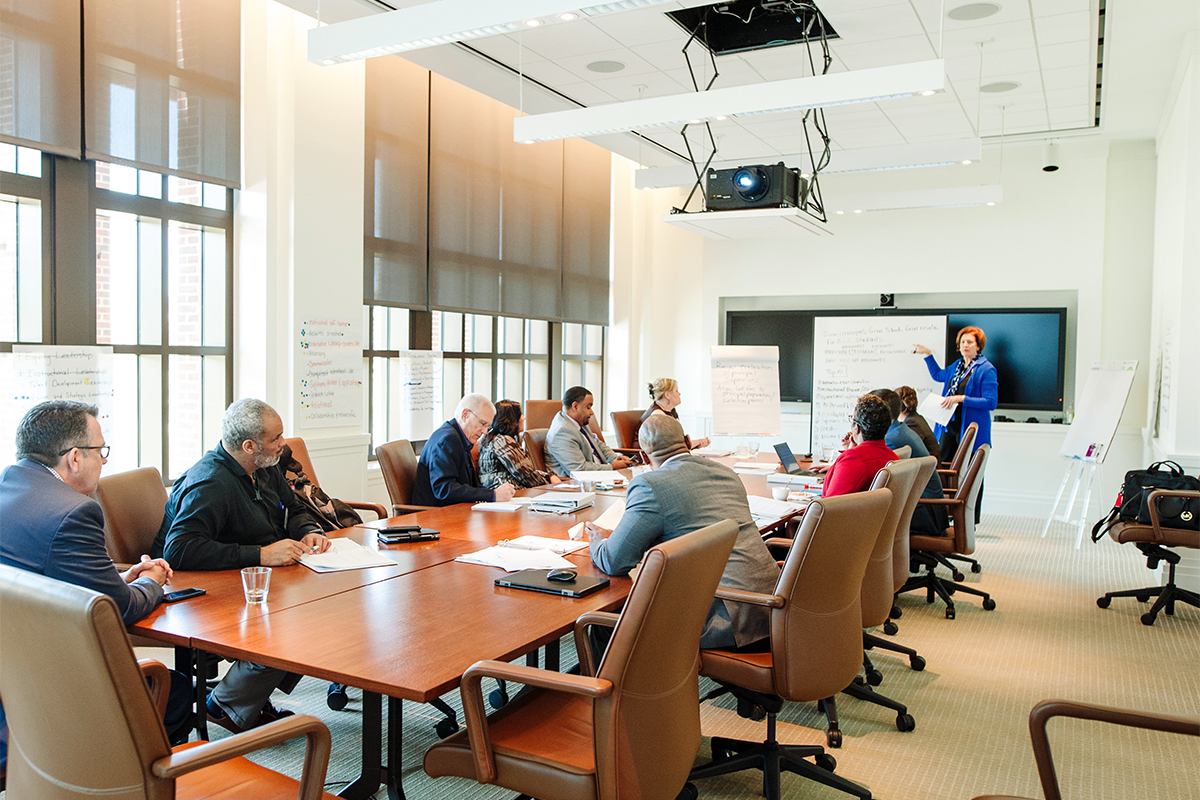Creating a More Just and Merciful World
State Variation in Leadership Training and Development of School Principals

States across the country are working to improve school leadership, turning to both traditional and nontraditional measures to better prepare high-quality school principals.
There are several factors encouraging state-level support of the recruitment, preparation and development of principals. These factors include research on the impact of principals on student learning, the Every Student Succeeds Act that governs public K-12 policy and organizations focused on school leadership.
School leadership is recognized as being critical in improving student achievement and retaining quality teachers. Leadership is also regarded as a significant factor in the difference between underperforming schools and those that nurture student learning.
Leadership Principles for Principals
Schools need qualified principals who are focused on instructional improvement, committed to relevant solutions and knowledgeable about the social and economic forces that influence education.
Great principals affect three areas:
- Student learning attitudes.
- Classroom instruction.
- Teacher satisfaction.
A principal’s ability to create a positive educational environment and inspire students and staff is what can make them an effective leader. The report How Leadership Influences Student Learning, commissioned by The Wallace Foundation, outlines three sets of practices that make up the basics of successful leadership:
- Setting directions by helping colleagues develop shared understandings of the organization.
- Developing people by providing individualized support and appropriate models of practices and beliefs.
- Redesigning the organization by strengthening district and school cultures, modifying organizational structures, and building collaborative processes.
What States are Doing to Support School Leadership
The Education Commission of the States offers a comprehensive comparison of school leader certification and preparation policies in all 50 states and the District of Columbia. The key takeaways from their research:
- All 50 states and the District of Columbia have standards for school leadership policies.
- At least 39 states and the District of Columbia allow for nontraditional or experimental paths to initial leader certification.
- At least 38 states require field experience as part of traditional preparation.
- At least 37 states require candidates to hold a master’s degree and have at least three years’ teaching, or related, experience to qualify for certification.
In Pennsylvania, for example, a candidate for school leader certification must hold a bachelor’s degree from an accredited college or university, complete a state-approved graduate-level principal certification program that includes other requirements and have at least three years of satisfactory professional school experience. They must also receive a passing score on the School Leaders Licensure Assessment.
An alternative route to certification in Pennsylvania includes verification of an offer of employment as a principal, vice/assistant principal or vocational director from a Pennsylvania public school. Within two years of employment, the provisional certificate holder must achieve a passing score on a leadership licensure assessment and either complete an approved administrator preparation program or a Pennsylvania Inspired Leadership Program.
Prepare for Principal Certification
Are you ready to develop your leadership abilities as a school principal? Carlow’s Graduate Certificate in Educational Leadership with Principal Certification Prep will prepare you for the required licensure test in Pennsylvania. The curriculum includes specialized coursework in improvement science, systems thinking and building networked communities. Test-prep resources and seminars are aligned to the licensure exam. Photo Credit: “Student Leadership Initiative District Cohort: First Session” by George W Bush Presidential Center is licensed under CC BY 2.0
Tags: leadership training and development of school principals
